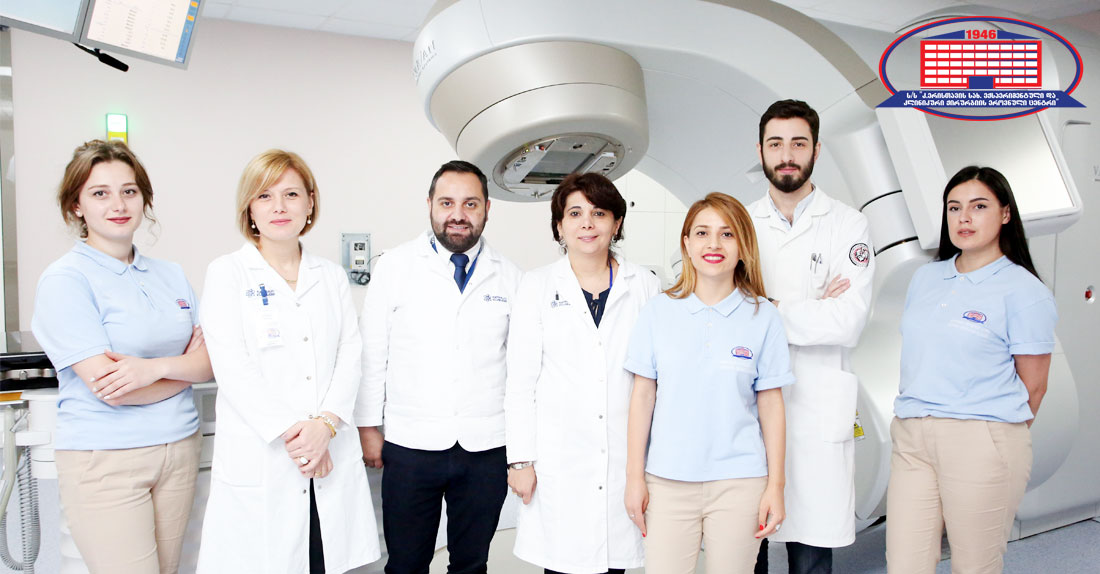
National Center Of Surgery
In the interview you will find out:
- What is medulloblastoma;
- Radiation therapy techniques;
- The treatment process and its risks;
- The patient's state of health.
Besik Sokurashvili, Head of the Radiotherapy Department at the National Center of Surgery, carried out another difficult treatment, which will be discussed in greater detail below.
What is medulloblastoma
Medulloblastoma is a malignant brain tumor that begins in the brain and extends to the spinal cord. It is mostly found in children, though adults and adults are affected as well.
A 24-year-old patient with characteristic medulloblastoma - a malignant tumor of the cerebellum, sought treatment at the National Center of Surgery. In April, the patient underwent surgery to remove a voluminous tumor from the cerebellum. The material's morphology revealed medulloblastoma G4, a classic variant.
on the morphological response, the patient received an MRI of the brain and spine, as well as the cytological examination of the head and spinal cord, such that the typical distribution for medulloblastoma in the cerebrospinal fluid and spine was not identified.
Cranio-spinal irradiation of the head and spine, as well as irradiation of the posterior fossa and tumor suture, were all planned.
Methods of radiation therapy
In radiation therapy, there are numerous treatment (radiation) modalities available, including 3D, IMRT, and VMAT. The difficulty of preparation and irradiation varies between these planning strategies. As a result, the doses and side effects experienced by irradiation healthy organs varied. The most serious downside of 3D treatment, for example, is that most healthy organs are irradiated.
The VMAT (Volumetric modulated arc therapy) approach is regarded as the most difficult of the aforementioned procedures. It saves the majority of the healthy structures surrounding the tumor, however, because the Volumetric modulated arc therapy approach is so difficult to prepare, test, transfer, and correct, many institutions, professional doctors, and medical physicists avoid using it!
The treatment process and its dangers
The radiation oncologist defined the target volumes: the brain, the spinal cord (including the Cauda Equina), the posterior fossa, and the tumor cortex. Medical physicists devised the strategy, which included the Volumetric modulated arc therapy approach and daily imaging-based control, and the process of correctly placing and treating the patient began. Besik Sokurashvili, Head of the Radiotherapy Department at the National Center of Surgery, discusses the patient's condition and the procedure's difficulties:
„Gray is a unit of measurement for the amount of radiation absorbed by the human body, in general, the spinal cord can resist only 40 grays of radiation, nevertheless, when using VMAT equipment, we irradiate the patient with at least 36 Gray, posing a significant risk. Each stage necessitates effort with millimeter precision! We have no right to make a single mistake because the patient's life is in danger. If this limit is surpassed, the radiation dose will be doubled, and the patient may spend the rest of their life in a wheelchair, or, in the worst-case scenario, die instantly! We divided the irradiation procedure into three stages :
- Phase I - Directly irradiate the formation, with the maximum dose;
- Phase II - We irradiated the organ that was most vulnerable after the formation;
- Phase III - At a minimal dose, we irradiated the head and spinal cord at the same time.
The Patient’s condition
„The complex course of irradiation went off without a hitch! Following the procedure, the patient's general condition and blood levels were re-monitored, and no additional intervention was required. It is currently under surveillance with the goal of monitoring and detecting probable return of the tumor process, nevertheless, a negative outcome is not expected based on the correct treatment approach and precise performance. Control examinations will be carried out under the supervision of an oncologist and a neurosurgeon. “- explained Besik Sokurashvili.
What are patients interested in
Chemotherapy
Qauestion:: Hello, My mother received several courses of chemotherapy, because of metastatic involvement of bone and liver. During that time platelet count significantly decreased and only presented with small skin hemorrhages. In chemotherapy, platelet count sometimes increases or decreases, she simultaneously takes Revolade (50mg) on a daily basis and underwent platelet transfusion several times that had an only short-term effect. Is it possible to find another solution for the mentioned problem at your clinic? Thanks in advance









